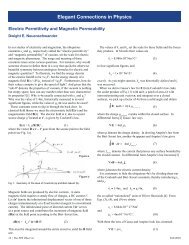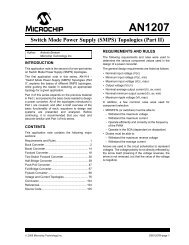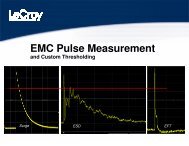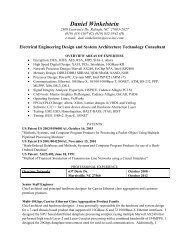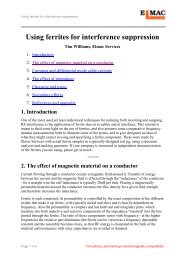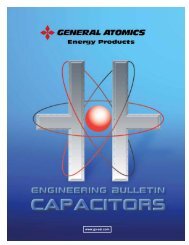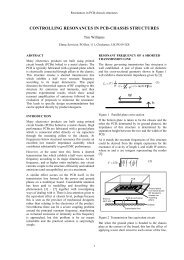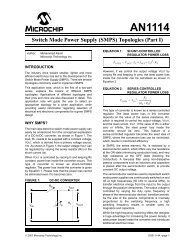SPICE-Simulation using LTspice IV
SPICE-Simulation using LTspice IV
SPICE-Simulation using LTspice IV
You also want an ePaper? Increase the reach of your titles
YUMPU automatically turns print PDFs into web optimized ePapers that Google loves.
11.4. The Step Down Converter<br />
In this circuit the MOSFET serves as a switch between the power supply and the inductor and<br />
the schottky diode is connected between the node “MOSFET’s source / inductor” and ground<br />
(initially reverse biased).<br />
Description:<br />
a) When the MOSFET is switched ON then the linear rising current flows from the power supply through the<br />
FETand the inductor to the output capacitor and the load resistor to ground. So the capacitor is charged<br />
and energy is stored in the magnetic field of the inductor.<br />
b) When the MOSFET is switched OFF the inductor current continues to flow in the same direction, but<br />
now the MOSFET is OFF and the schottky diode switches on to maintain current flow. The stored<br />
magnetic energy is transferred to the output circuit (= C1 and R1) until the inductor current has<br />
decreased to zero. During the time this current flows the voltage across the diode is NEGAT<strong>IV</strong>E with<br />
respect to ground!!!<br />
Note:<br />
1) In practical circuits the stabilization of the output voltage is always done by varying the on to off<br />
ratio of the driving squarewave voltage at the gate of the MOSFET.<br />
2) The amplitude of the output voltage is always less than the power supply voltage!<br />
If you want to know the exact output amplitude value, multiply the supply voltage with the ratio „ON-time /<br />
period time“. So for our example we get with an ON-time of 0,5ms and a period time of 1ms<br />
Vout = 0,5 x 12V = 6V<br />
75



